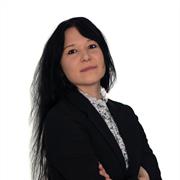
Agnieszka Kiejziewicz
Details
-
Department: School of Communication & Design
-
Campus: Saigon South Campus Vietnam
-
agnieszka.kiejziewicz2@rmit.edu.vn
-
ORCID: 0000-0003-2546-6360
Open to
- Masters Research or PhD student supervision
About
Dr. Agnieszka Kiejziewicz – holds a PhD in the Arts and Humanities (with an emphasis on Film and Media) from the Jagiellonian University in Poland; the author of academic publications and monographs. She is the author of over fifty peer-reviewed articles concerning audiovisual art, media art, Asian film, media, culture, digital art, games. For the past few years, she has been working at RMIT Vietnam, developing Virtual Reality and holographic display-based projects. She is particularly interested in connections between body and nature and human perception of the connection to nature in technology-driven surroundings.
Key Grant and Funding
2025 Kiejziewicz A, Athugala R, Kaliyaperumal S, Regenerating Play: Emerging Careers through Immersive 3D Technologies, RMIT CEIQ Educational Innovation Grant (AUD 5,000)
2023-2024 Earl C, Kiejziewicz A, Dinh TA , 2AI: Academic integrity in the age of machine learning applications, RMIT Learning & Teaching Grant, USD5,000 (AUD7,266)
2023 – 2024 – Kiejziewicz A, Stiff A, Denis-Delacour C, River Cities as Method: Biography of the Sai Gon River VR storytelling pilot, RMIT Tier II Internal Grant, (AUD 24,000)
2020 Kiejziewicz A, Cyberpunk movie memorabilia. Preliminary research, ZAiKS (Union (or Association) of Authors and Stage Composers) stipend for writers, Poland (AUD 2,040)
2018 Kiejziewicz A, Japanese culture and film, Erasmus + Internship Grant (AUD 8,200)
2017 – 2018 – Kiejziewicz A, Researching on New Japanese Experimental Film. Young Researcher Award, Jagiellonian University, Poland (AUD 3,000).
Industry Experience
- Andrzej Wajda Film Center, University of Gdańsk, Poland. Film Center administration (2021-2022)
- Curator of the intermedia installation “The Language of Stray Bodies”, together with intermedia artist Elvin Flaming and his research team. The installation was displayed as a part of “Twilight of the Anthropocene” exhibition at The Academy of Fine Arts, Gdańsk, Poland. The installation got the exhibition first prize and the first prize on WRO Media Art Biennale 2021: REVERSO. (September 2020 – November 2020)
- Curator of the project exhibition and collection “Cyberpunk is now!” Warsaw – Wroclaw (Poland) (October 2019 – 2020
- Visiting curator of the Japanese part of the exhibition “Janusz Kaniewski,” Gdynia (Poland), Gdynia City Museum; exhibition dedicated to design works of a Polish artist Janusz Kaniewski.(November 2019 – September 2020)
Committees
2023- Learning and Teaching Committee, SCD, RMIT Vietnam
Memberships and associations
2025- Digital Games Research Association (DiGRA) (international)
2023- Association of Asian Studies (US)
2023- River Cities network, Institute of Asian Studies (IIAS), Leiden University, Netherlands
Academic positions
- Academic teacher (non-tenure track); Film and visual culture
- University of Gdańsk
- Department of Philology
- Gdańsk, Poland
- 2020 – 2022
- Non-tenure track lecturer
- Jagiellonian University
- Faculty of Management and Social Communication, Institute of Audiovisual Arts
- Krakow, Poland
- 2016 – 2018
Non-academic positions
- Film Center administration
- University of Gdańsk
- Andrzej Wajda Film Center
- Gdańsk, Poland
- 2021 – 2022
- Academic cultural events administrator
- University of Gdańsk
- Academic Cultural Center “Alternator”.
- Gdańsk, Poland
- Jan 2020 – Sep 2021
- Film educator
- New Horizons of Film Education
- Poland
- Oct 2018 – Mar 2020
Teaching interests
Cultural Studies
Asian Cinema
Critical Media theory
Digital Media
Games Narratives
Games Archives
Principles of Play
Game Studies
Game Cultures
Research interests
Game design
Games archives
Asian film
Contemporary art
Future cities and future narratives
Expanded visuality
VR art and somatic film experience